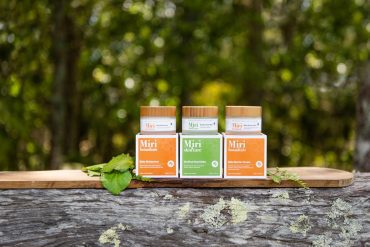By Hannah Mearns
You’re approaching the 40-week mark and those calls from your family, friends and your mum’s best friend from school who somehow knows your due date are taking on a frenzied tone. Your best mate wants to make sure you’re the one she tells first, your mother-in-law has picked out her outfit for the first photo with her grandkid and your dad is postponing his holiday to make sure he can meet the little one as soon as possible. It’s enough to make you want to drop your phone into the bath on purpose. Maybe just put it on silent for a bit.
You’re wondering if every tiny bit of fluid you can feel is the start of your waters breaking, you’ve had enough of aching in bed when you try to sleep and every Braxton Hicks contraction you feel could be the start of something. In other words, the pressure is on.
On top of all that noise, your midwife is now talking to you about engagement fractions (three-fifths? Is three-fifths OK for now?), sweeps and inductions. You’re wondering if every tiny bit of fluid you can feel is the start of your waters breaking, you’ve had enough of aching in bed when you try to sleep and every Braxton Hicks contraction you feel could be the start of something. In other words, the pressure is on.
Technically, there’s no ‘natural’ way to bring on labour, as even a sweep might be hurrying along a baby who’s not quite ready to make an appearance yet. Research now shows that the baby’s lungs will release a special protein that tells the mum’s body that it’s ready to go and start labour. Also, the baby’s head position is vital. The pressure of it on the cervix also kicks off and amplifies the flow of hormones needed for labour. The best advice out there is to be patient and let nature take it’s awe inspiring course.
What’s a woman to do? Wait it out and hope for the best or speed things along yourself if you can? Could your attempts make labour a painful nightmare or will they just not work? Here’s a brief roundup of options you might have seen or heard about.
Might work but might not:
Pineapple – this apparently does work. The bromelain it contains is thought to act in a similar way to the human hormone prostaglandin that ripens and softens the cervix, making labour more likely to start imminently. You can try this one late in pregnancy if you like but be warned – you’ll need to eat 8 fresh pineapple cores a day to get anywhere near the volume of bromelain that you need in your body for it to be effective. That means none of the tasty flesh and no juicy canned ones either.
Hot and spicy food – There’s no real evidence for this one. If you have a craving for spicy food, indulge it. Bear in mind though that the last thing you want to deal with, alongside your labour, is an upset digestive system if you overdo it. Your body will likely prepare itself with a mini clearing of the system so what goes in will come out sometime soon.
Stay away from these:
Castor oil – the evidence shows that this will work for some people but if it does, the outcomes aren’t normally good. Everyone who took part in studies felt nauseous, many had much more painful labours and it was likely that taking it increased the chances of a cesarean. This one doesn’t sound good to me. I’d leave it well alone.
Aloe vera juice – bottles of aloe vera juice often carry a warning that they shouldn’t be used by pregnant women. It works as a laxative and can irritate the uterus, causing strong contractions that can easily become out of control giving you a more difficult and possibly more painful labour. I’d stay well clear of this too – it doesn’t sound worth the risk.
See next page for what you CAN try!












Wow, I had never really even considered these before. Who would have thought pineapple juice would work!